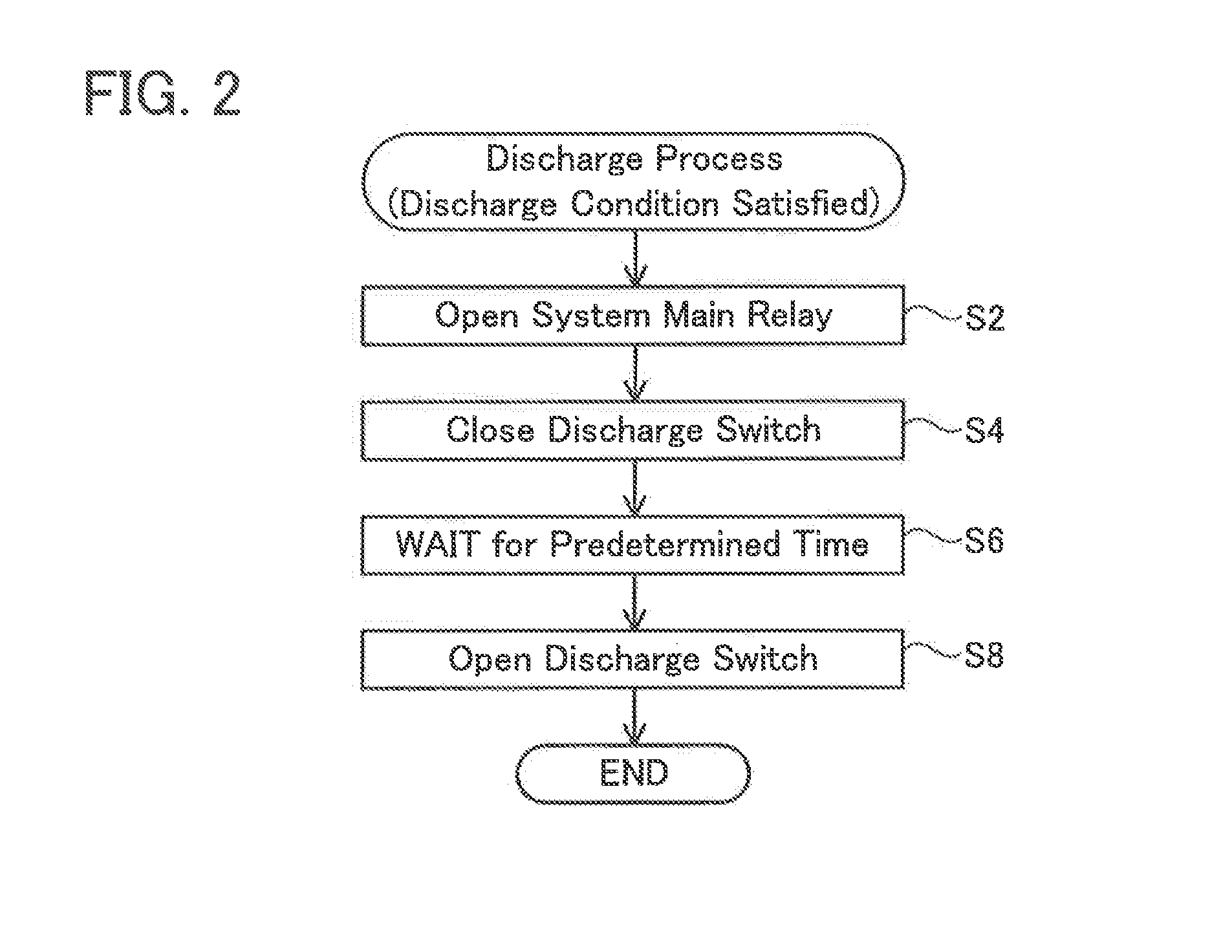Electric vehicle
- Summary
- Abstract
- Description
- Claims
- Application Information
AI Technical Summary
Benefits of technology
Problems solved by technology
Method used
Image
Examples
first embodiment
[0028]An electric vehicle of a first embodiment will be described. The electric vehicle of the first embodiment is a hybrid vehicle 2 comprising both an engine and a motor for driving, FIG. 1 shows a block diagram of a power system of the hybrid vehicle 2. In FIG. 1, the engine is not shown. Further, it should be noted that only components needed for the description of the present specification are depicted in FIG. 1, and devices not related to the description are not shown even if the devices belong to the power system.
[0029]Power for driving a motor 8 is supplied from a main battery 3. The output voltage of the main battery 3 is, e.g., 300 volts. Moreover, in addition to the main battery 3, the hybrid vehicle 2 also comprises an auxiliary battery 13 for supplying power to devices (often called “auxiliaries”) such as a car navigation system 53, an interior light 54, etc., which are driven by a voltage lower than the output voltage of the main battery 3. The output voltage of the au...
second embodiment
[0047]FIG. 4 shows a block diagram of a hybrid vehicle 2a of a second embodiment. In the hybrid vehicle 2a, the configuration of a discharge circuit 20a differs from the first embodiment. The configuration other than the discharge circuit 20a is the same as the first embodiment, and consequently a description thereof is omitted.
[0048]The discharge circuit 20a comprises a second resistor 25 in addition to the configuration of the discharge circuit 20 of the first embodiment. The second resistor 25 is connected to the semiconductor switch 21 and the first resistor 23 in series. Further, the second resistor 25 is connected to the PTC thermistor 24 in parallel. According to this configuration, electric current flows through the series circuit configured by the first resistor 23 and the PTC thermistor 24 while the temperature of the PTC thermistor 24 is low. When the temperature of the PTC thermistor 24 increases, the electric current flows through the series circuit configured by the fi...
third embodiment
[0050]Next, an electric vehicle of a third embodiment will be described. FIG. 5 shows a block diagram of a hybrid vehicle 2b of a third embodiment. In the hybrid vehicle 2b, the configuration of a. discharge circuit 20b differs from the first embodiment. The configuration other than the discharge circuit 20b is the same as the first embodiment, and consequently a description thereof is omitted. The discharge circuit 20b comprises a third resistor 26 in addition to the configuration of the discharge circuit 20 of the first embodiment, The third resistor 26 is connected in parallel to a series circuit which is configured by the semiconductor switch 21, the first resistor 23 and the PTC thermistor 24. That is, the third resistor 26 is constantly connected to the capacitor C1 in parallel. The resistance value of the third resistor 26 is selected to be a value higher than the resistance value of the first resistor 23. The discharge circuit 20b of the third embodiment discharges the capac...
PUM
 Login to View More
Login to View More Abstract
Description
Claims
Application Information
 Login to View More
Login to View More - R&D
- Intellectual Property
- Life Sciences
- Materials
- Tech Scout
- Unparalleled Data Quality
- Higher Quality Content
- 60% Fewer Hallucinations
Browse by: Latest US Patents, China's latest patents, Technical Efficacy Thesaurus, Application Domain, Technology Topic, Popular Technical Reports.
© 2025 PatSnap. All rights reserved.Legal|Privacy policy|Modern Slavery Act Transparency Statement|Sitemap|About US| Contact US: help@patsnap.com



